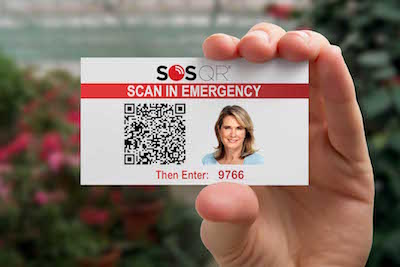 Communicating the IT strategic plan is one of the primary responsibilities of a CIO. Most importantly, the IT strategic plan should be seen as an enterprise wide activity and not just an IT centric exercise. IT should be an enabler for the strategy of the business and every IT tactic should tie back to a high priority of the business. In 2016, the BIDMC IT strategic plan has five pillars that align with quality, safety and efficiency imperatives (instead of Meaningful Use, ICD10, and the Affordable Care Act as was the case 2013-2015). The pillars are:
Communicating the IT strategic plan is one of the primary responsibilities of a CIO. Most importantly, the IT strategic plan should be seen as an enterprise wide activity and not just an IT centric exercise. IT should be an enabler for the strategy of the business and every IT tactic should tie back to a high priority of the business. In 2016, the BIDMC IT strategic plan has five pillars that align with quality, safety and efficiency imperatives (instead of Meaningful Use, ICD10, and the Affordable Care Act as was the case 2013-2015). The pillars are:
mobile devices
See the following -
Forces & Trends That Will Impact The Laboratory Informatics Market In 2014
[...] Michael Shanler, Research Director at Gartner, John Wise, Executive Director at The Pistoia Alliance and Gernot Goeller, Head O&I CoE ED &CMC at Bayer Pharma took part in a series of interviews surrounding the key trends that will impact the laboratory informatics industry in 2014 and beyond. Read More »
- Login to post comments
Ford Goes Open Source To Speed App Development
In the ecosystem gamble of “open” or “closed,” Ford is putting all its chips on open. At this week’s Mobile World Congress, Ford announced it’s releasing the proprietary source code for its Sync AppLink platform to Genivi, an automotive-centric open source alliance. Read More »
- Login to post comments
Get Set For The Digital Health Festival
EHealth Insider is launching a new Digital Health Festival to “take the pulse of digital health.” Taking inspiration from music and cultural festivals, there will be a series of conferences, meetings and social events taking place at different venues at different times from 30 April to 16 May.
- Login to post comments
Google Android Software Is Not As Free Or Open-Source As You May Think
Some mobile and tablet manufacturers are being charged six-figure fees by third party testing facilities for a license to use Gmail, Google Play and other parts of Google's mobile services, the Guardian has learned. Read More »
- Login to post comments
Halamka Outlines the Pillars of Beth Israel's IT Strategic Plan
- Login to post comments
Health & Wellness Wireless Sensor Networks To Be Worth $16 Billion In 2017, Says ON World
ON World’s recently published report covers 16 unique wireless sensing applications that are transforming health and wellness for chronic disease management, operational management, assisted care and general wellness. Read More »
- Login to post comments
Health Information Errors Cited Among Top 10 Health IT Hazards
Three of the 10 top health technology hazards cited in a report from ECRI Institute deal with errors in information management. Read More »
- Login to post comments
How Praekelt.org and Open Source Provide Critical Services to Enable Social Change
 In Eastern and Southern Africa, women are still dying unnecessarily during the basic, natural act of giving life. According to Unicef, “In 2010, close to 58,000 women lost their lives during pregnancy and childbirth, accounting for more than one fifth of all such deaths in the world.” Gustav Praekelt, founder of the South African design and development firm Praekelt.com, was deeply affected by the high maternal mortality rate in his country and realized in 2007 that open source software and mobile phones could help provide critical information and services to combat poverty and maternal mortality rates -- among other social issues -- across the continent and potentially around the world.
In Eastern and Southern Africa, women are still dying unnecessarily during the basic, natural act of giving life. According to Unicef, “In 2010, close to 58,000 women lost their lives during pregnancy and childbirth, accounting for more than one fifth of all such deaths in the world.” Gustav Praekelt, founder of the South African design and development firm Praekelt.com, was deeply affected by the high maternal mortality rate in his country and realized in 2007 that open source software and mobile phones could help provide critical information and services to combat poverty and maternal mortality rates -- among other social issues -- across the continent and potentially around the world.
- Login to post comments
How Telecoms Can Escape Vendor Lock-In With Open Source NFV
 Today, Network Functions Virtualization (NFV) takes software applications that run on proprietary hardware and allows them to run on standard x86 servers. This allows core network infrastructure to dynamically allocate network, compute and storage to satisfy workloads on-demand. It also allows you to move these workloads to different servers, or even different data centers as needed, and to scale up or scale down without changing the underlying hardware. NFV provides you with a modern agile environment to respond to customers needs, get to market quickly with new services, and reduce both capital and operational expenditures...
Today, Network Functions Virtualization (NFV) takes software applications that run on proprietary hardware and allows them to run on standard x86 servers. This allows core network infrastructure to dynamically allocate network, compute and storage to satisfy workloads on-demand. It also allows you to move these workloads to different servers, or even different data centers as needed, and to scale up or scale down without changing the underlying hardware. NFV provides you with a modern agile environment to respond to customers needs, get to market quickly with new services, and reduce both capital and operational expenditures...
- Login to post comments
Humetrix Calls for Burgess Interoperability Bill to Add Provider/Patient EHR Exchange
 As a developer of several mobile personal health record applications, Humetrix supports Congressman Michael C. Burgess, MD, aim to accelerate electronic health record interoperability as expressed in his draft Health IT bill. We emphasize the need to facilitate health information exchange between providers and their patients, so that patients or their caregivers connect and exchange their personal health information with different providers as a key complement to efforts to improve health information exchange between provider systems.
As a developer of several mobile personal health record applications, Humetrix supports Congressman Michael C. Burgess, MD, aim to accelerate electronic health record interoperability as expressed in his draft Health IT bill. We emphasize the need to facilitate health information exchange between providers and their patients, so that patients or their caregivers connect and exchange their personal health information with different providers as a key complement to efforts to improve health information exchange between provider systems.
- Login to post comments
Humetrix Demos SOS QR Emergency & Disaster Preparedness Mobile Platform at FCC Accessibility Innovations Expo
 Humetrix, developer of the award-winning SOS QR emergency mobile platform, last year’s recipient of the FCC Chairman’s Awards for Advancements in Accessibility (AAA), is honored to participate in this year’s FCC Accessibility Innovation Expo taking place on October 23 in Washington, DC. The Humetrix SOS QR technology has won multiple innovation awards since its first launch in 2014 being recognized by the White House as an innovative technology for disaster preparedness, winning the NHS TestBed competition last year, and the 2016 FCC Chairman’s Award for Advancement in Accessibility.
Humetrix, developer of the award-winning SOS QR emergency mobile platform, last year’s recipient of the FCC Chairman’s Awards for Advancements in Accessibility (AAA), is honored to participate in this year’s FCC Accessibility Innovation Expo taking place on October 23 in Washington, DC. The Humetrix SOS QR technology has won multiple innovation awards since its first launch in 2014 being recognized by the White House as an innovative technology for disaster preparedness, winning the NHS TestBed competition last year, and the 2016 FCC Chairman’s Award for Advancement in Accessibility.
- Login to post comments
Humetrix Upgrades iBlueButton App To Support Caregivers; Demos New Features At 2014 International CES Booth 26327 Digital Health Summit
Humetrix will preview version 5.0 of its signature iBlueButton app, enhanced with “caregiver” features that allow anyone to view, download and share with doctors their own medical records, as well as those of loved ones, all via their smart phone or tablet. Read More »
- Login to post comments
IT Consumerization: A Case Study of BYOD in a Healthcare Setting
This article focuses on the implementation of BYOD in a healthcare setting. First, the challenges of implementing BYOD in the healthcare industry are examined. Next, a case study of The Ottawa Hospital is developed to illustrate the practical benefits and hurdles that must be overcome when hospital staff begin using consumer IT devices in the workplace. Finally, recommendations are offered to help healthcare organizations develop and implement a successful BYOD strategy. Read More »
- Login to post comments
Larry Ponemon On Securing Regulated Data In Healthcare: Q&A
Though mobile applications that share files through the cloud such as Box and DropBox can be appealing to consumers, the Ponemon Institute has found that these types of applications can be unsafe in a clinical environment. [...] Read More »
- Login to post comments
Majority Of Surveyed Docs Using Mobile Devices In Practices
Mobile computing devices are becoming almost as much of an essential tool in U.S. physician practices as the exam table, according to a new survey. Read More »
- Login to post comments